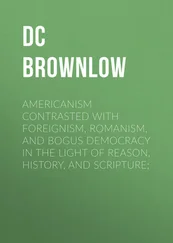Bennett kept a basement office at the Rouge, which included a secret door that could be opened by using a button underneath his desk. In this secret room, Bennett and Ford would have their meetings, with a guarantee of the utmost privacy. Bennett was a company man through and through, once boasting, ‘I am Mr Ford’s personal man.’ His dedication to Henry Ford was second to none. ‘If Mr Ford told me to blacken out the sun tomorrow, I might have trouble fixing it. But you’d see a hundred thousand sons-of-bitches coming through the Rouge gates in the morning, all wearing dark glasses.’
Bennett played the role of a gentleman gangster, recruiting a variety of athletes, ex-military and even ex-cons to his Ford enforcement department, dubbed the Service Department. The men, adorned with suits, fedoras and guns, used the threat of physical violence to keep the workforce in check. The rules in the factories became strict and overbearing. The workers weren’t allowed to talk to each other or even sit down. The workers became accustomed to the absurd rules that they even learned to speak to each other without moving their lips, hoping to avoid a beating at the hands of Bennett and his men. The workers referred to it as the ‘Fordization of the face’.
The National Labor Relations Act, also known as the Wagner Act, was passed in 1935. This new legal foundation gave workers the right to organise into unions, giving them the power to negotiate working conditions and wages. The Ford Motor Company was one of the last big companies to fight the unions. Bennett was authorised by Ford to take care of the union by any means necessary. The Service Department thugs attacked the union representatives when they came to the factory to hand out pamphlets. Images taken by photographers on the scene were soon published around the United States, showing evidence of the brutal nature of the battle that the unions were fighting. The restrictions in the Ford factory got out of control for a time. At one point, if men were seen talking in groups they were assumed to be unionising, were often beaten and subsequently fired. In April of 1941, 50,000 Ford workers protested outside the Rouge plant, pressing Ford to give in to the union demands for pay and conditions. Ford reportedly fumed that he would rather shut down his factory than give in to the union demands, but even Ford couldn’t ultimately stop the union. Ford’s son Edsel would step in as the voice of reason and strike a deal with the union, a move that Ford would resent.
Bennett became the trusted right-hand man of Henry Ford, which was likely a sore spot for his son, Edsel. When one man threatened Edsel’s life, Bennett assured him that he would handle the situation and the man turned up dead shortly thereafter. Bennett was clearly not a person to be crossed. Henry Ford eventually had Bennett spy on his son, who was living a lush extravagant lifestyle, which Ford hated. Edsel, an only son, soon began to see Bennett as a rival for his father’s affections, something that he gave out in very short supply as it was.
The Henry Ford who employed Bennett to control his workers was a far cry from the younger Henry Ford, who had been an eager pioneer and business mogul. No, this Ford was increasingly paranoid and angry. Ford felt that the world he knew was gone and that the country had lost control; he would often comment about how he yearned for yesterday. Ford didn’t mellow as he aged either, he continued to insist that the Jews were persecuting him and Edsel became concerned for his father’s state of mind and his ability to run the Ford Motor Company. Ford did suffer two mild strokes, one in 1938 and another in 1941; in 1945 however, he had another, far more severe, stroke that left him in a state of mental confusion. Edsel had died of stomach cancer on 26 May 1943, aged 49, so his son, Henry Ford II, took over as president of the Ford Motor Company. Henry Ford died on 7 April 1947 at the age of 83.
The Rampant Anti-Semitism of the Era
Around a million Jews lived in the United States at the dawn of the twentieth century; half were located in New York City. This is a stark contrast to the previous Jewish population in America, which had been 50,000 only a half-century before. The population would continue to grow rapidly with 1.75 million Jews immigrating to America between 1900 and 1924. The power and influence of the Jewish community in society and in politics began to grow significantly during this time, as they began to represent 3.5 per cent of the American populace. This was a huge change from the less than 1 per cent that Jews had represented prior to this era. In fact, the primarily East Coast Jewish population was such a presence that when Theodore Roosevelt was running for his first full term presidency in 1904, his campaign released pamphlets in Yiddish.
The Jewish presence had become so noticeably large in America that by the time the First World War rolled around, the armed forces began to cater especially to the Jewish population, trying to incite them to get involved in the war effort. On 9 April 1917, the Jewish Welfare Board was established, a mere three days after America officially declared its war on Germany. The purpose of the JWB was to support Jewish soldiers during wartime and to recruit and train rabbis, in much the same way that priests and pastors were provided to support the Christian soldiers.
It was during the time between the First World War and the Second World War that anti-Semitism would grow rapidly in the United States. The conditions of the Great Depression would exacerbate the growing resentment, and even violence, towards the American Jewish population, due to a perception that wealthy Jews and Jewish bankers were responsible for the stock market crash.
Another major opposition to the Jews at the time was the Ku Klux Klan. The first rise of the KKK was reactionary following the loss of the South to the North in the American Civil War. The KKK would only last for five years during that volatile era of American history, but would rise again in 1915 and last all the way to 1944, near the end of the Second World War. The original incarnation of the KKK was directly opposed to African American leaders and advancement, and while the second version was no fan of African Americans, their focus was more on the recent immigrants to the United States, focusing on Jews and Catholics. The numbers of the Klan grew exponentially, clocking in at over 4 million, far surpassing the entire Jewish population of America at the time.
One of the darker stories of anti-Semitism to come from pre-war America was the lynching of a Jewish businessman, Leo Frank, in Atlanta back in 1915. Frank was accused of murdering a worker in the pencil factory that he managed. The then governor of Georgia, John M. Slaton, commuted Frank’s sentence to life in prison instead of death row. This pardoning of a Jew incited a rabid mob that proceeded to break into the jail, drag Frank out into the street, and hang him. Evidence that was later brought to light showed that the very man who accused Frank of the crime, the pencil plant janitor Jim Conley, might have been responsible for the crime himself. Frank was given a posthumous pardon for the murder in 1986.
Although there were isolated examples of actual physical violence, the climate had certainly turned against the Jewish immigrants in the United States. The results of a 1938 Gallup poll revealed that fifty per cent of Americans, when questioned, answered ‘yes’ to having a low opinion of Jews. That is where American society was at the onset of the Second World War.
This was an era when the New International Encyclopaedia had the following entry describing Jews as a race:
Among the distinguishing mental and moral traits of the Jews may be mentioned: distaste for hard or violent physical labor; a strong family sense and philoprogenitiveness; a marked religious instinct; the courage of the prophet and martyr rather than of the pioneer and soldier; remarkable power to survive in adverse environments, combined with great ability to retain racial solidarity; capacity for exploitation, both individual and social; shrewdness and astuteness in speculation and money matters generally; an Oriental love of display and a full appreciation of the power and pleasure of social position; a very high average of intellectual ability.
Читать дальше












